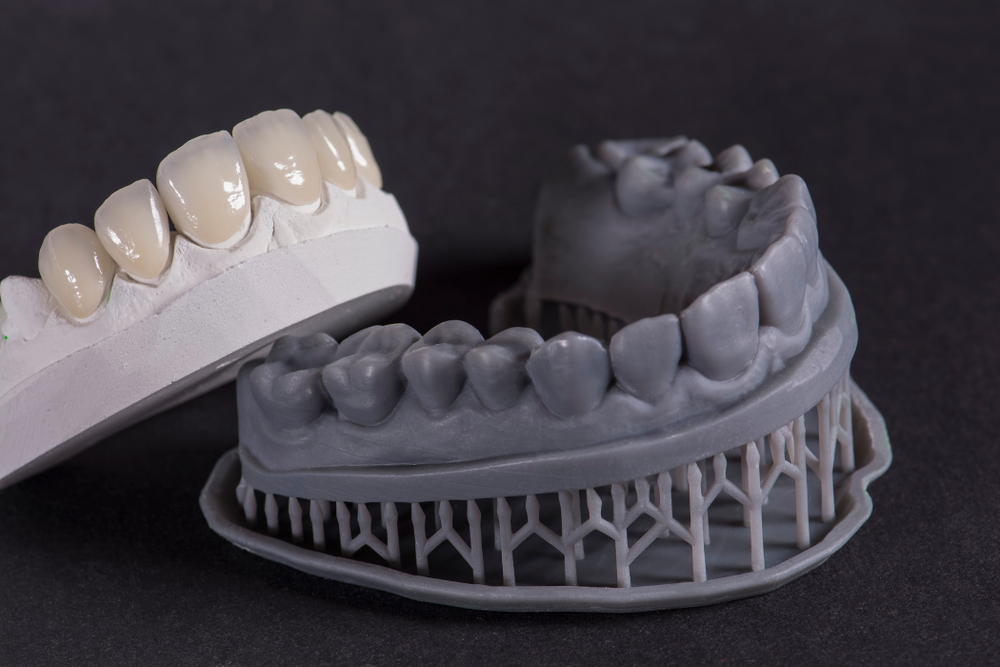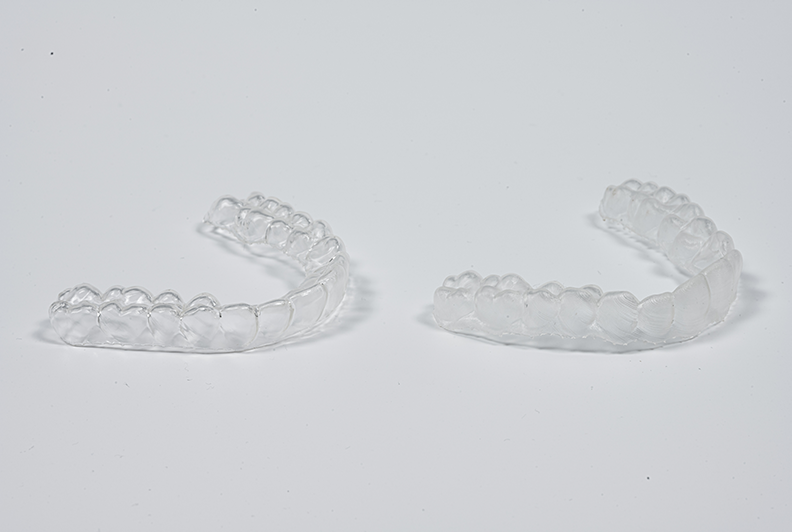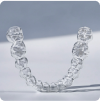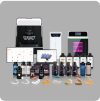
Applications of 3D Printing in Dentistry
Every set of teeth are unique, and patients often need custom implants or other appliances to support their dental treatment plan. Dental appliances are custom to each patient, requiring manufacturing precision and adjustments to ensure a comfortable fit. 3D printing is an efficient alternative to traditional manufacturing processes for producing dental appliances faster, with higher accuracy, and with minimum waste.
With the increasing availability of advanced materials for 3D printing, the range of printable dental appliances continues to expand. Applications of 3D printing in dentistry already include implants, models, guides, surgical tools, and PPE. Dental care providers utilizing such applications are enabling faster, more responsive service and better patient care.

Popular Applications of 3D Printing in Dentistry
The most popular applications of 3D printing in dentistry are intermediate tools, such as dental models and surgical guides, and end-use appliances, like splints and implants.
Dental Models
Dental models are accurate 3D replicas of a patient’s teeth that require digital or manual processes to make. The traditional manual process includes pouring plaster or gypsum into impressions of a patient’s teeth. After the material hardens, the model is removed from the base mold, carefully finished, and used to thermoform clear aligners.
Digital processes for making dental models include intraoral scanning solutions combined with 3D printing production systems. Digitized workflow converts the intraoral scan of the patients teeth into dental model CAD files that can be processed, and directly 3D printed. Digital processes accelerate model and aligners’ production by replacing the plaster process and eliminating manual steps in creating dental models.
Thermoforming aligner material over the 3D printed dental model is still necessary, however, continued advancements in 3D printing technology and materials will enable 3D printed splints, retainers, and night guards directly from intraoral scans eliminating the need for dental models further streaming the dental appliance digital production workflow.
Surgical Guides
Surgical guides prevent unintentional damage to a patient’s mouth during dental surgery, helping surgeons drill implants into the bone with precision. Traditionally, a surgical guide is formed after taking impressions at a desired surgical implant site followed by manual fabrication steps. 3D-printed surgical guides are printed directly from intraoral scans of the implant site followed by direct 3D printing of the guide. This digitized process removes the manual fabrication steps and eliminates the need for tooling while achieving higher comfort and accuracy levels than thermoformed or cast guides.
Dental Splints
Night guards and retainers are in the dental splint category. These dental appliances are usually manufactured by thermoforming a thermoplastic sheet over a dental model, followed by grinding and buffing for a clear final product. Instead of using a throwaway mold and multiple post-processing steps, many advanced 3D printing systems eliminate dental model fabrication and thermoforming steps by directly 3D printing splints with high transparency and accuracy. Once printed, minor buffing is needed to finish the split.

The Value of 3D-Printed Dental Appliances
3D printing systems are adaptable and do not require tooling to produce the final product. A single system can produce custom dental appliances for many applications and with many certified materials. Applications of 3D printing in dentistry provide the following significant advantages:
- Less material waste. Directly 3D printing dental appliances eliminate the need for a throwaway mold used in thermoforming, reducing up to 80% of material waste.
- Faster turnaround and delivery to patients. Advanced 3D printing production systems produce finished dental appliances without intermediate tooling and significant grinding and buffing post-processing. For splints and implants, eliminating the thermoforming and casting step also decreases the overall production time, and final products are delivered directly to patients.
- Print in-office or from a service provider. Advanced 3D printing systems are now available for use by dentists, orthodontists, and 3D printing service providers. The ability to print in a dentist’s office eliminates the need to order dental models and finished appliances from a service provider. Orthodontists and dentists can create finished appliances and execute a treatment plan in less time, enabling same-day procedures.
By reducing material waste, expediting printing and finishing steps, and increasing system accessibility, dental care providers can create higher quality dental appliances with competitive costs. Advancements in 3D printing production systems enable more advanced materials to achieve greater production speed and efficiency in a broader range of dental appliances and applications.
Now you can innovate and implement new applications of dental 3D printing production systems with LuxCreo’s Digital Dentistry Solutions. The unique LEAP printing process is compatible with multiple dental resins and streamlines dental lab production with less material waste and competitive costs. With our 3D printing production system for night guards and retainers, LuxCreo can help you expand your business and transition to sustainable manufacturing through additive manufacturing.
To learn more about our processes and services for 3D printing at scale, visit our contact page or call (650) 336-0888.
Subscribe to Our Newsletter
Be the first to get our latest updates and free trials!
Popular Resources
Follow Us
Featured Products

4D Aligner™
First Smart ActiveMemory™
Aligner

iLux Pro Dental Solution
Ultimate 1-Click Dental
Application Solution

LuxCloud Dental
Your One-stop Digital Dentistry
Platform

 dental.luxcreo.com
dental.luxcreo.com
